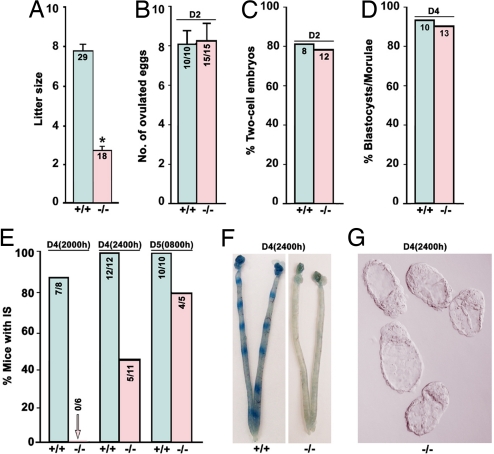Fig. 1.
HB-EGF deficiency defers the window of implantation, leading to compromised pregnancy. (A) Litter sizes from Hbegf−/− mice are smaller than those of WT mice (Student t test, *, P < 0.01). Numbers within bars indicate numbers of mothers examined. Data are presented as mean ± SEM. (B and C) Ovulation and fertilization are comparable between WT and null mice. Numbers within bars in B indicate the number of mice with eggs/total number of mice examined, and those in C are number of mice with two-cell embryos examined. (D) Preimplantation embryo development is normal in Hbegf−/− mice. Numbers within bars indicate number of mice examined. (E) HB-EGF deficiency leads to deferral of implantation as examined on day 4 evening (2000 h and 2400 h) and day 5 morning (0800 h) by the blue dye method. Numbers within bars indicate numbers of mice with implantation sites (IS) per the total number of mice examined. (F) Representative photographs of WT uteri with IS and Hbegf−/− uteri without blue bands on day 4 midnight (2400 h). (G) Representative photomicrograph of unimplanted morphologically normal blastocysts recovered from Hbegf−/− females without blue reaction at 2400 h of day 4.

